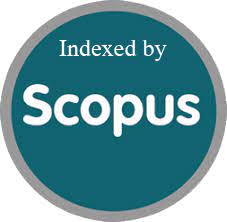Functional Intestinal Obstruction of Prematurity (FIOP): Short term management results: A case series
DOI:
https://doi.org/10.52783/jns.v11.1048Keywords:
Functional intestinal obstruction of prematurity, Management, Meconium, Premature newbornAbstract
Background: Functional Intestinal Obstruction of Prematurity (FIOP) is the delay or failure of meconium evacuation in premature neonates. It is associated with hypomotility in the developing intestine. It mostly presents with signs of intestinal obstruction in very low (VLBW) or extremely low birth weight (ELBW) neonates.
Case Series: We present short-term results regarding the management of 8 premature newborns with FIOP treated with Awolaran O. et al [1] algorithm in a pediatric hospital, two of them required a surgical procedure due to conservative management failure.
Conclusion: Early conservative management is successful in most patients with FIOP, related to symptom resolution. Surgical management should be kept for those with conservative management failure.
Downloads
Metrics
References
Awolaran O, Sheth J. Management strategies of functional intestinal obstruction of prematurity. Journal of Neonatal Surgery. 2021;10:12.
Schauble A, Bisaccia E, Lee G, Nasr S. N-acetylcysteine for management of distal intestinal obstruction syndrome. J Pediatr Pharmacol Therapeut. 2019; 24:390-7.
Emil S, Nguyen T, Sills J, Padilla G. Meconium obstruction in extremely low-birth-weight neonates: guidelines for diagnosis and management. J Pediatr Surg. 2004; 39:731-7.
Solaz-García A, Segovia-Navarro L, Rodríguez de Dios-Benlloch J, Benavent-Taengua L, Castilla-Rodríguez D, Company-Morenza M. [Prevention of meconium obstruction in very low birth weight preterm infants.]. Enfermería Intensiva. 2019; 30:72-7. Article in Spanish.
Paradiso V, Briganti V, Oriolo L, Coletta R, Calisti A. Meconium obstruction in absence of cystic fibrosis in low birth weight infants: an emerging challenge from increasing survival. Ital J Pediatr. 2011; 37:55.
Siddiqui M, Drewett M, Burge D. Meconium obstruction of prematurity. Arch Dis Childhood - Fetal and Neonatal Edition. 2010; 97:F147-F150.
Kwon H, Jung J, Lim Y, Nam S, Lim G, Chung M. Erratum: Impact of meconium obstruction-related risk factors on surgical intervention in very low birth weight infants. Neonatal Med. 2015; 22:182.
Okuyama H, Ohfuji S, Hayakawa M, Urushihara N, Yokoi A, Take H, et al. Risk factors for surgical intestinal disorders in VLBW infants: Case-control study. Pediatr Int. 2015; 58:34-9.
Greenholz S, Perez C, Wesley J, Marr C. Meconium obstruction in the markedly premature infant. J Pediatr Surg. 1996; 31:117-20.
Haiden N, Jilma B, Gerhold B, Klebermass K, Prusa A, Kuhle S, et al. Small volume enemas do not accelerate meconium evacuation in very low birth weight infants. J Pediatr Gastroenterol Nut. 2007; 44:270-3.
Cho H, Cheon J, Choi Y, Lee S, Kim W, Kim I, et al. Ultrasound-guided contrast enema for meconium obstruction in very low birth weight infants: Factors that affect treatment success. Eur J Radiol. 2015; 84:2024-31.
Copeland D, St. Peter S, Sharp S, Islam S, Cuenca A, Tolleson J, et al. Diminishing role of contrast enema in simple meconium ileus. J Pediatr Surg. 2009; 44:2130-2.
Hong H, Kim S, Park G. Oral administration of nonionic water-soluble contrast media to treat meconium obstruction in premature infants: A preliminary study. Neonatal Med. 2021; 28:22-8.
Koshinaga T, Inoue M, Ohashi K, Sugito K, Ikeda T, Tomita R. Therapeutic strategies of meconium obstruction of the small bowel in very-low-birthweight neonates. Pediatr Int. 2011; 53:338-44.
Kahn D, Gregorisch S, Whitehouse J, Fisher P. Delayed diagnosis of spontaneous intestinal perforation among very low birth weight neonates: A single center experience. J Perinatol. 2019; 39:1509-20.

Published
How to Cite
Issue
Section
License
Copyright (c) 2022 Daniel Acosta Farina, Verónica Polit-Guerrero, Johan Aguayo-Vistin, Cristhian Cedeño-Moreira, Vicente Salinas-Salinas, Daniel Acosta-Bowen, jorge Oliveros-Rivero

This work is licensed under a Creative Commons Attribution 4.0 International License.
You are free to:
- Share — copy and redistribute the material in any medium or format
- Adapt — remix, transform, and build upon the material for any purpose, even commercially.
Terms:
- Attribution — You must give appropriate credit, provide a link to the license, and indicate if changes were made. You may do so in any reasonable manner, but not in any way that suggests the licensor endorses you or your use.
- No additional restrictions — You may not apply legal terms or technological measures that legally restrict others from doing anything the license permits.










